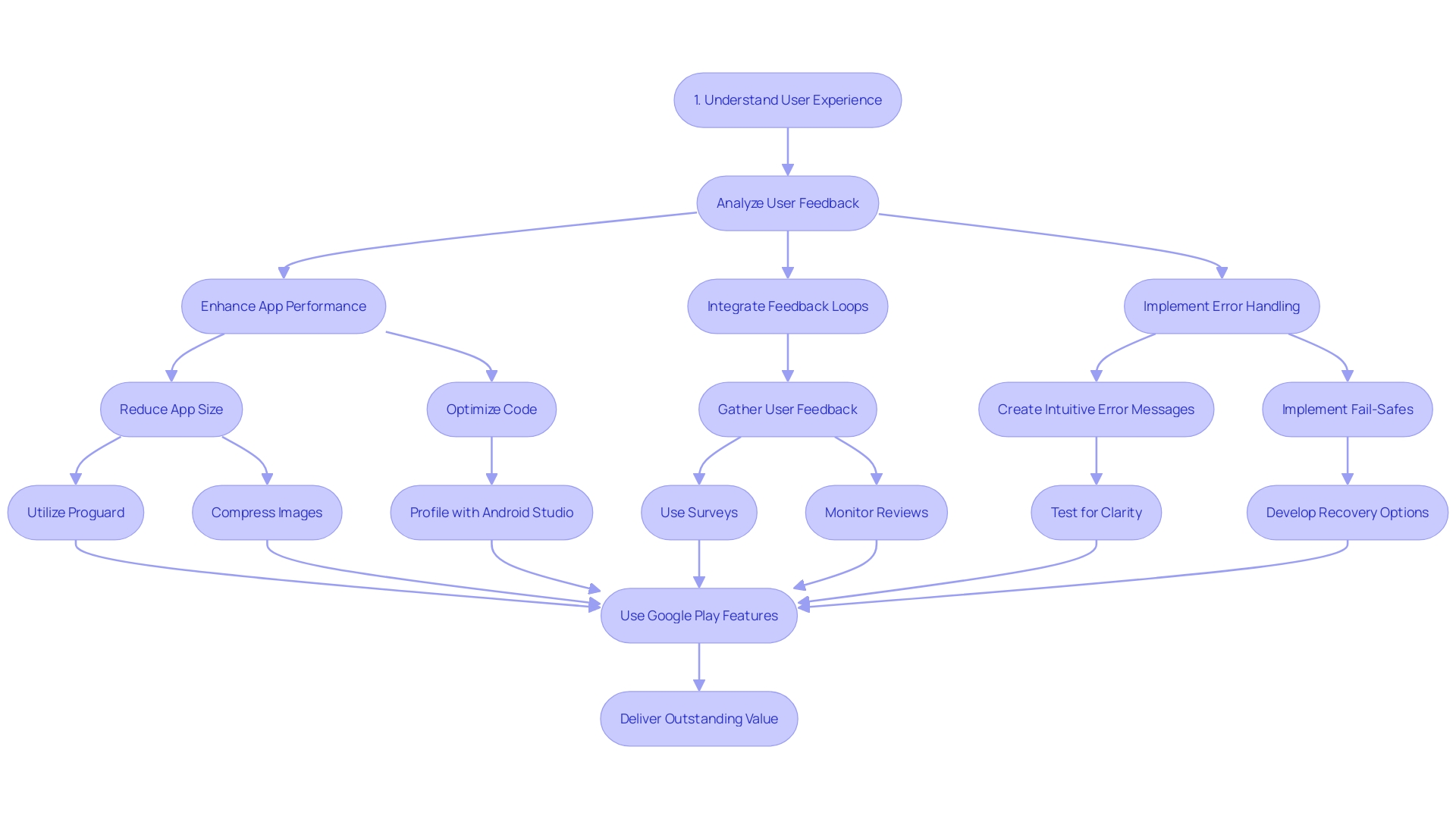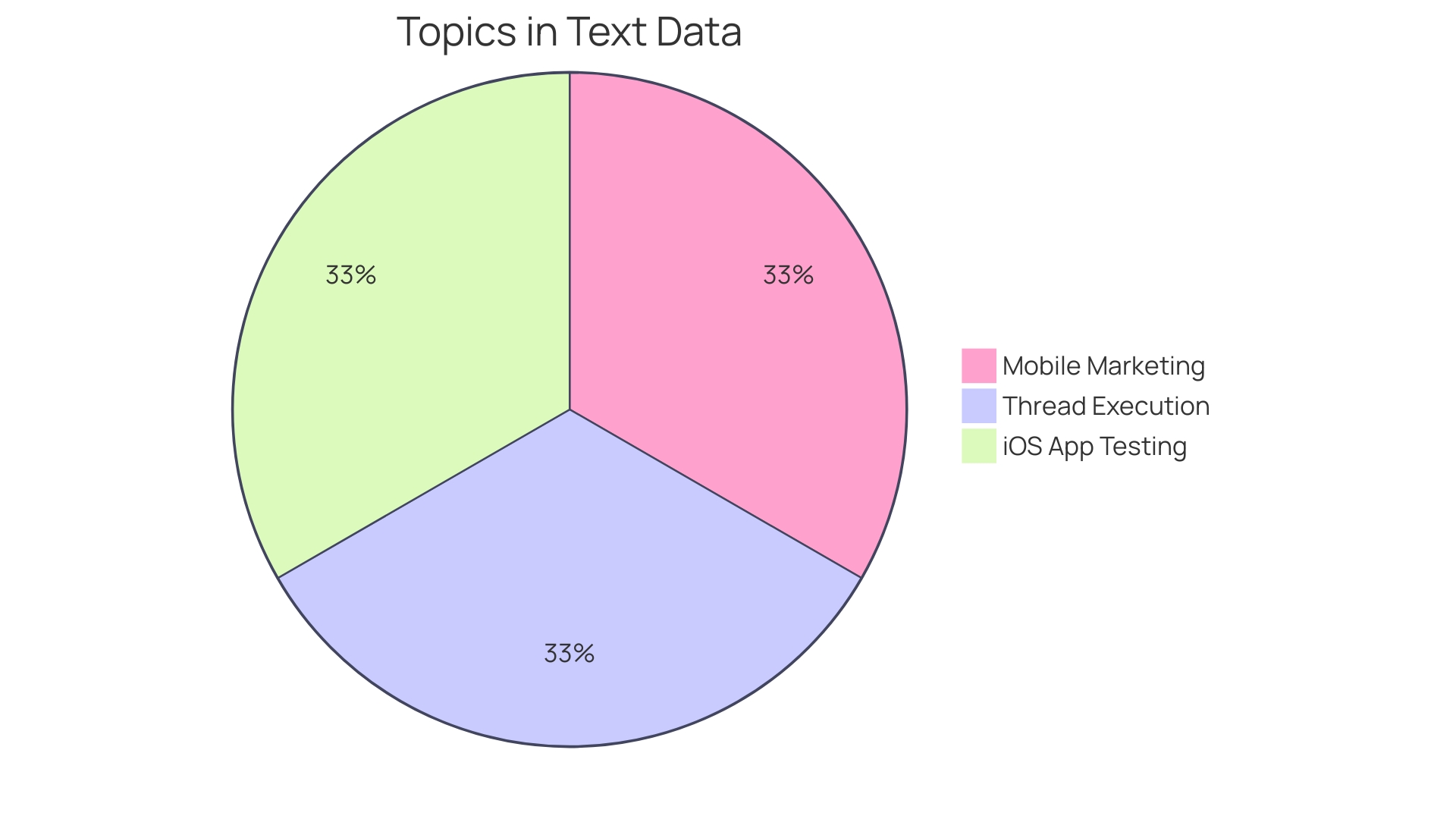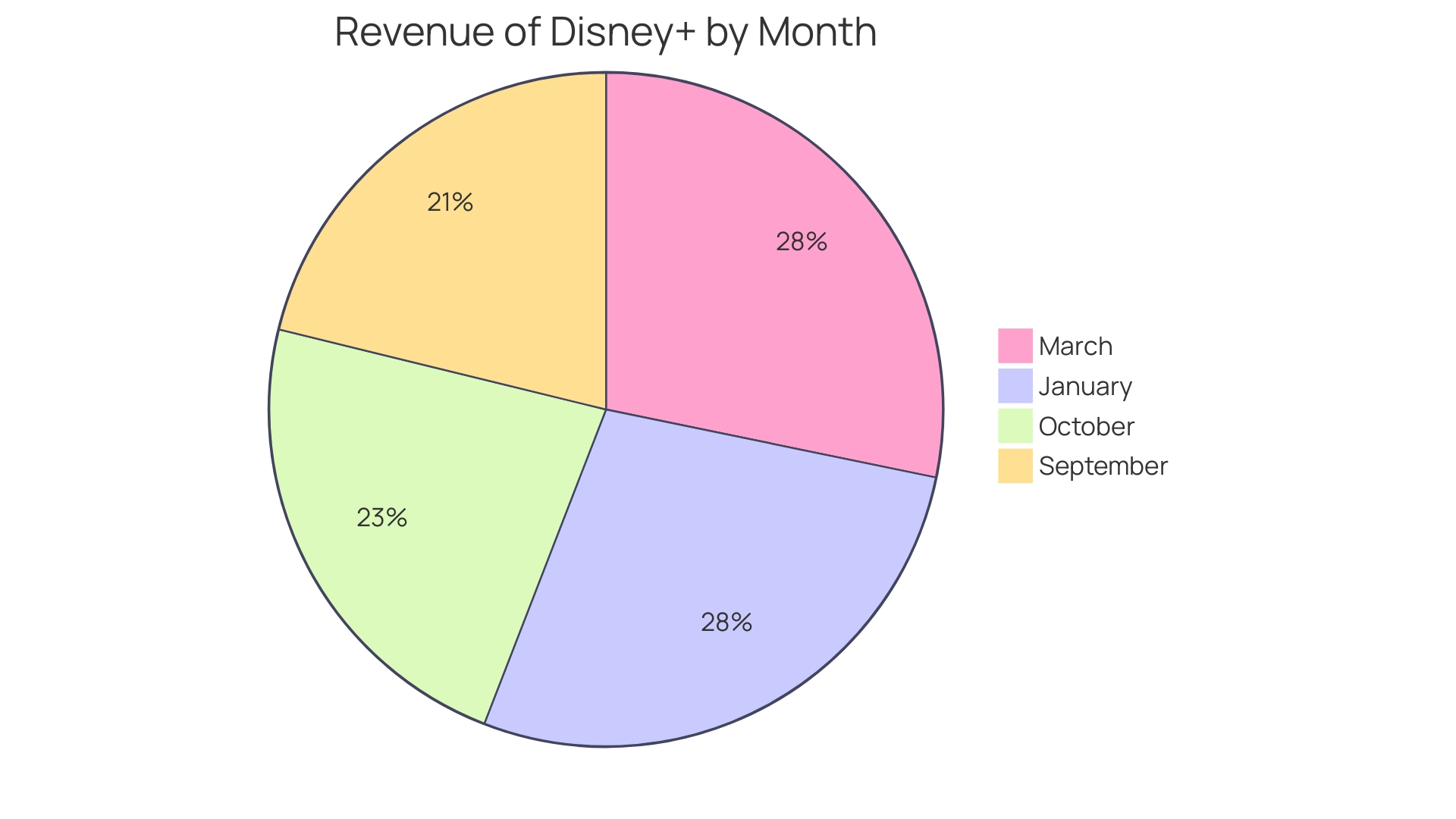Introduction
In the realm of Android app development, a well-crafted user interface (UI) and user experience (UX) are essential for customer satisfaction and business success. This article explores key elements for enhancing user experience, design principles for Android app development, strategies for improving user experience, optimizing app performance, integrating advanced features, best practices for accessibility and localization, visual appeal and craftsmanship, and monetization strategies. By understanding these concepts, developers can create apps that meet and exceed user expectations, driving engagement, loyalty, and success in the competitive digital marketplace.
Key Elements for Enhanced User Experience
In the realm of Android app development, a well-crafted interface (UI) and experience (UX) are not mere embellishments but the foundation of customer satisfaction and business success. In today's digital world, it is essential for apps to not only engage users with an aesthetically pleasing layout but also offer a user-friendly and smooth navigation experience—attributes that can greatly enhance the perceived worth of your app.
High Voltage Trading (HVT), a European asset management firm, exemplifies the power of a strong brand identity and a user-centric app interface. With the help of The Reach, a creative agency, HVT revamped its brand and UI/UX design, resulting in a digital presence that effectively communicates its unique value proposition and reinforces its reputation for innovation and trustworthiness.
Incorporating these principles, developers should prioritize performance optimizations such as reducing app startup time and improving build processes. As suggested by industry experts, the mantra 'MEASURE' remains a guiding principle, stressing the importance of precise measurement as a precursor to enhancement. Tools like APK Analyzer and Android Studio play a crucial role in dissecting app binaries and guiding developers towards efficient optimization.
The effect of an excellent mobile UX is apparent in engagement and retention statistics. Over 50% of consumers shun brands with subpar mobile sites, while sites loading in under two seconds witness a 15% higher conversion rate. Furthermore, a vast majority of B2B buyers are likely to make repeat purchases from vendors providing an exceptional mobile environment.
While Google Play continues to develop, bringing in fresh visual elements, video capabilities, and original editorial content, it remains dedicated to enhancing experiences of its users and backing the expansion of app and game businesses. By leveraging these advancements, developers can ensure their apps meet the rising expectations of users, fostering loyalty and driving business growth.
To develop a prosperous mobile application, it is crucial to recognize a target audience, comprehend their preferences, and customize the app's appearance and functionality to their requirements. A polished UI/UX, coupled with a solid understanding of market needs, positions your app for success in the competitive digital marketplace.
Design Principles for Android App Development
In the fast-paced world of Android app development, adopting the correct principles is not just advantageous—it's crucial for standing out in a crowded marketplace. Extracting insights from 'The Non-Designer’s Design Book' and Joe Natoli's 'Design Rules,' we learn that impactful design relies on principles that are both simple and profound. These resources guide us to prioritize user experience above all, urging us to create interfaces that are not only visually appealing but also intuitive and responsive to user needs.
The success of apps like Notion and VSCode is evidence of the strength of user-centered approach. Notion's versatility across various functions—from project management to databases—illustrates how an app can be both multifaceted and user-friendly. VSCode's dedication to upholding standards, even amidst contributions from developers worldwide, showcases the significance of consistency.
Key principles such as 'form follows function' have developed into 'form follows feeling,' as observed by the Material team's knowledge. This alteration acknowledges that although a simplistic style can be elegant, it is the integration of feeling through form, hue, and movement that generates a captivating and individualized user experience. Furthermore, embracing the concept of 'just start' encourages designers to begin the creative process, sometimes leading to the most innovative solutions.
Collaboration can also yield remarkable results. As seen in the approach of 'design by committee,' using tools like Figma to harness collective creativity has resulted in a rich tapestry of ideas and a shared sense of ownership. The focus on starting promptly and iterating has proven to be a crucial approach in the constantly evolving creative field.
Statistics highlight the importance of mobile UX, indicating that over half of individuals will decline a brand with a badly designed mobile site. With mobile sites that load in under two seconds boasting a 15% higher conversion rate, the message is clear: users prioritize efficiency and ease of use over intricate aesthetics. This is further supported by the fact that a well-designed mobile experience increases the likelihood of repeat business and recommendations.
In conclusion, the amalgamation of simplicity, consistency, and emotional resonance in design, paired with a collaborative and iterative approach, forms the cornerstone of successful Android app development. By internalizing these principles and statistics, developers can craft applications that not only meet but exceed user expectations, securing their place in the competitive mobile app ecosystem.
Strategies for Improving User Experience
Improving the UX for your Android app goes beyond a cosmetic enhancement; it's a strategic move that can greatly enhance user productivity and satisfaction. To achieve this, focus on enhancing app performance, which is a comprehensive measure encompassing the application's responsiveness and efficiency. An application that performs well not only promptly fulfills requests from individuals but also provides a seamless and pleasant experience, which is essential for keeping individuals engaged.
The importance of UX optimization is based on its capacity to deeply impact an individual's emotions and attitudes towards a product. A well-optimized UX is characterized by its usefulness, addressing individual needs and solving pain points effectively over time. The User Experience Honeycomb framework, developed by Peter Morville, delineates the facets of UX to consider, emphasizing the importance of creating products that are not only valuable but also accessible and credible.
Additionally, integrating feedback loops and strong error handling mechanisms can greatly improve engagement and satisfaction of individuals. By actively inviting individuals to contribute their opinions and promptly addressing any issues that arise, you demonstrate a commitment to continuous improvement and responsiveness to individual needs.
Performance optimization ensures that your app meets the high standards of today's individuals. Techniques such as reducing app size by removing unused resources and libraries can lead to quicker load times and more efficient use of device space. In addition, thanks to the continuous improvements of Google Play, which encompass novel visual elements and video functionalities, developers now possess a variety of resources to craft increasingly vibrant and engaging app encounters.
Remember, as Sam Bright, Vice President & General Manager of Google Play, states, the success and creativity of the app developer community are paramount. By utilizing the features and programs of Google Play, you can optimize your app's potential and establish a thriving business while delivering outstanding value to individuals. Therefore, draw motivation from prosperous case studies and the most recent advancements in the domain to enhance the performance and usability of your Android application.

Optimizing App Performance for Better User Experience
To ensure your Android application stands out in a crowded market, it's crucial to prioritize performance optimization. The success of an application relies on delivering a remarkable user journey (UX), which depends on four essential elements: rapid loading times, smooth animations, proficient memory management, and effective battery optimization. Let's explore the reasons why each of these factors is crucial for enhancing productivity and satisfaction.
Rapid loading times are the first impression your app makes. When the app loads rapidly, it establishes the conditions for a favorable user interaction. As per web performance metrics, the First Contentful Paint (FCP), which measures the time taken for the initial piece of content to appear on-screen, is crucial for engagement. Smooth animations contribute to an app's aesthetic appeal and functional prowess, ensuring a seamless interaction without jarring transitions or delays.
Efficient memory management is another cornerstone of performance optimization. It involves judicious use of resources, ensuring that the app consumes only what's necessary to offer an optimal outcome. This efficiency can lead to improved app responsiveness and reduced crashes. Battery optimization, on the other hand, extends the device's longevity, allowing for longer sessions and increased satisfaction with the app.
Enhancing these elements not only boosts the overall satisfaction but also contributes to higher user retention rates, positive reviews, and ultimately, the success of your application. As evidenced by successful case studies, such as the Hardcover platform, which saw significant improvements in Google Search Engine Traffic by focusing on technical optimizations, the benefits of performance tuning are clear and measurable.
In summary, by targeting these crucial performance factors, developers can create Android apps that not only meet but exceed user expectations, fostering loyalty and driving success in the competitive digital marketplace.

Integrating Advanced Features for Enhanced User Experience
Enhancing the overall satisfaction and interaction of an Android app surpasses the integration of fashionable characteristics; it entails improving user efficiency and involvement through deliberate optimization. By prioritizing app performance, which includes efficient processing and prompt response times, you can guarantee that individuals stay engaged and content. For example, decreasing app startup time and data retrieval speed are concrete methods to enhance the experience. A study reveals that mobile sites loading in two seconds or less see a 15% higher conversion rate, underscoring the demand for speed and efficiency over visual aesthetics. Furthermore, ease of access is critical, and incorporating features like push notifications and offline functionality can greatly increase the convenience and accessibility of your app. Incorporating social media and voice commands adds additional levels of engagement, further enhancing the worth of your app for individuals. It's essential to measure and analyze these improvements accurately, as echoed by the principle, 'If you can't measure it, you can't improve it.' This approach is crucial for continuous optimization, as highlighted by the development of custom analytics tools like App Size and the AI-driven features in Android Studio's Gemini tool, which aid developers in writing code aligned with best practices and provide real-time feedback. As mobile UX becomes increasingly important for retaining and converting users, it's evident that a well-performing app is crucial to a successful online presence.
Best Practices for Accessibility and Localization
In the realm of Android Application Development and Google Cloud Developer Services for Mobile Device Management, ensuring that applications are universally accessible and localized is paramount. Embracing digital accessibility, which aims to create technology experiences usable by as many people as possible, including those utilizing assistive technology, transforms app development into a more inclusive endeavor. With an estimated 1 billion individuals with disabilities globally, integrating features that support screen readers, voice commands, and customizable interfaces is not just a courtesy—it's a necessity.
When it comes to localization, providing translation services, currency conversions, and region-specific content is not just about reaching a wider audience; it's about connecting with individuals on a personal level. Acknowledging the variety of individual requirements, encompassing cognitive impairments and diverse physical capabilities, is crucial in designing interactions that are not just functional but also comprehensible and resilient, following the guiding principles of the Web Content Accessibility Guidelines (WCAG).
By embedding accessibility and localization into the development lifecycle, organizations can avoid the pitfalls of retrofitting these features later on. As demonstrated by the Accessibility Enablement Team at Springer Nature, early integration of accessibility considerations ensures that content is accessible from the start. Meanwhile, the introduction of accessibility tags by Google Play demonstrates a pioneering approach to assisting individuals in identifying apps that meet their specific requirements, further emphasizing the significance of these considerations in app development.
Visual Appeal and Craftsmanship in Android Apps
Creating a visually stunning and functional Android app requires more than just technical skill; it demands a keen eye for aesthetics and user interaction. By utilizing the potential of UI layout, shades, typography, and careful focus to particulars, developers can create an application that not just differentiates in a congested market yet also relates to individuals on an user-friendly degree.
High Voltage Trading's collaboration with The Reach to revamp its brand identity showcases the importance of integrating a unique value proposition into the app makeover. This method is not only about looks but about offering a smooth and pleasant interaction that promotes reliability and genuineness.
Furthermore, contemporary artistic trends from agencies like Numiko and forecasts from Freepik emphasize the adoption of inventive styles such as liquid and iridescent 3D, which can be utilized to generate a captivating app interface. By staying abreast of these trends, developers can ensure their app remains relevant and appealing.
Statistics underscore the significance of mobile UX, with over 50% of consumers shunning brands with poorly designed mobile sites, and sites that load quickly seeing higher conversion rates. An excellent mobile experience not only retains individuals but also encourages repeat business, highlighting the need for an app that balances form and function.
Incorporating the philosophy of user-centered approach (UCD) is crucial. An app must be intuitive and cater to the individual's needs and behaviors to ensure it is not just engaging but also friendly and accessible. This design strategy is echoed by statements from industry experts who advocate for an emotion-driven approach where 'form follows feeling,' and the importance of first impressions in app design cannot be overstated.
Ultimately, an Android app that delivers a fusion of visual appeal and user-centric functionality will not only captivate individuals but also drive engagement and retention, leading to sustained success in the competitive world of mobile applications.
Monetization Strategies for a Positive User Experience
App monetization strategies must be carefully balanced with the satisfaction and interaction of the users to guarantee ongoing engagement and revenue generation. For instance, Alex Ross, CEO and founder of a plant care app named Greg, found that pivoting from a usage-based to a feature-based monetization model was necessary. At first, Greg's customers faced a paywall only after adding a significant number of plants to their collections. This monetization approach was founded on the concept of enabling individuals to encounter real worth prior to confronting a monetary choice. However, Ross recognized the need for change and adapted the app's strategy to align monetization more closely with feature access.
In the same way, acquisition (UA) strategies and monetization are closely connected, especially in mobile gaming. As UA managers craft their marketing campaigns, they must be acutely aware of the game's revenue goals and key performance indicators (KPIs), tailoring their efforts to support and enhance the game's monetization approaches. A strong comprehension of monetization not only helps in establishing achievable goals but also in creating strategies that provide value to both the individual and the company.
Additionally, providing an application that individuals download and interact with requires comprehending the 'unseen aspect' of data, as emphasized by the author of Freakonomics, Steven Levitt. By measuring and analyzing the right data, developers can unravel the complexities behind app downloads and usage patterns.
In the fiercely competitive app market, it is essential to incorporate revenue-generating techniques like in-app transactions, premium subscriptions, or targeted advertising in a manner that improves, rather than disrupts, the user journey. With over 55 million individuals, 193 million transactions, and 110 thousand paywalls tracked by Adapt, developers have access to a wealth of data to guide their monetization strategies. This data can inform new pricing strategies, paywall A/B testing, and product combinations, ensuring that the monetization methods employed are effective and respectful of user experience.

Conclusion
In conclusion, in the realm of Android app development, a well-crafted user interface (UI) and user experience (UX) are essential for customer satisfaction and business success. By prioritizing performance optimizations, developers can ensure their apps load quickly and efficiently, meeting the high standards of today's users. Incorporating advanced features such as push notifications and offline functionality can greatly enhance the convenience and accessibility of the app.
Moreover, by embracing design principles that prioritize user experience, developers can create visually appealing and intuitive interfaces that resonate with users on an emotional level.
Accessibility and localization are also crucial considerations in app development. By embedding these features into the development lifecycle, organizations can ensure their apps are inclusive and cater to a diverse range of user needs. Additionally, by focusing on visual appeal and craftsmanship, developers can create apps that stand out in a crowded marketplace and drive engagement and retention.
When it comes to monetization strategies, it is important to strike a balance between revenue generation and user experience. By aligning monetization models with feature access and carefully considering user acquisition strategies, developers can provide value to both the user and the company. Furthermore, data analysis plays a vital role in understanding user behavior and informing effective monetization approaches.
By understanding these key elements and implementing the recommended strategies, developers can create Android apps that meet and exceed user expectations. This will drive engagement, loyalty, and success in the competitive digital marketplace. With a focus on user-centric design and continuous optimization, developers can position themselves as industry leaders and deliver exceptional value to their users.





